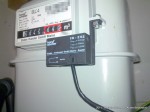Some of you following my micro-blogging on Twitter might already know about it: In the last few months I have been busy developing a new application. What initially just started out as a re-write of the user interface of Quasar Media Player has turned into a completely new application called QuasarMX. It is based on the very core of Quasar Media Player but stripped of all the legacy and third-party code. The completely new UI is based on Qt Quick / QML, a new technology which simplicity and elegance I fell in love with over the past year. For me QuasarMX also marks the start of two experiments:
1. How many platforms and operating systems can I port my app to?
2. Is there any commercial viability at all in publishing the software to various app stores (Nokia Ovi store, Android Market etc.) ?
The first experiment is important to me. Now that Nokia put the Qt project into open governance, the Qt community has the unique opportunity to extend primary platform support to Android, iOS and possibly even Windows Phone 7, thus extending the possible market cap and audience for mobile apps based on Qt dramatically. This experiment is largely about experiencing first hand what changes are required to get my application running on these platforms and as a matter of fact what needs to be done in projects like Necessitas (Qt on Android) to make that goal happen.
As for the second experiment I am actually just interested in getting to know the mechanics of the various app stores. I am pretty confident that there is little to no money to be made from yet another music player app. Yet, it is still interesting to see what happens, what works and what not, especially in regards to future apps.
In July Nokia accepted my application and invited me into the Qt Ambassador program. As part of this program Nokia loaned a N950 developer device to me, which I extensively used to develop and test the Harmattan UI for QuasarMX. The new user interface is very much inspired by the simplicity of the MeeGo Harmattan Swipe UI.
As of yesterday the open Beta 1 of QuasarMX is available for the Nokia N9 and N950. Releases for other platforms will follow shortly.









